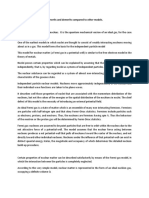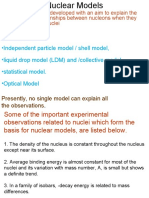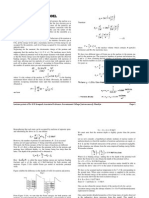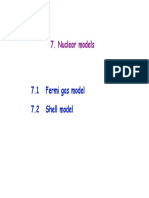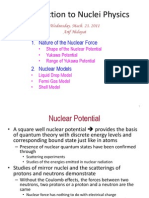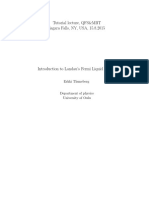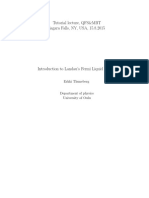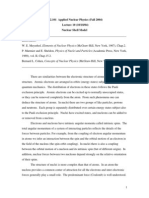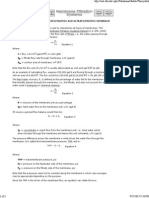0% found this document useful (0 votes)
123 views2 pagesNP
The document summarizes the key assumptions of four nuclear models:
1. The liquid drop model assumes nuclei behave like spherical liquid drops and nucleons move freely within the nuclear potential barrier. However, it cannot explain magic numbers or excited states.
2. The shell model assumes nucleons fill nuclear shells and subshells according to spin and orbital momentum. It can explain magic numbers but not properties of heavier nuclei.
3. The Fermi gas model treats protons and neutrons as non-interacting fermions in potential wells, with a common Fermi energy. However, it is invalid for small atoms.
4. The collective model treats the nucleus as a quantum mechanical system but its assumptions and
Uploaded by
aslam janCopyright
© © All Rights Reserved
We take content rights seriously. If you suspect this is your content, claim it here.
Available Formats
Download as DOCX, PDF, TXT or read online on Scribd
0% found this document useful (0 votes)
123 views2 pagesNP
The document summarizes the key assumptions of four nuclear models:
1. The liquid drop model assumes nuclei behave like spherical liquid drops and nucleons move freely within the nuclear potential barrier. However, it cannot explain magic numbers or excited states.
2. The shell model assumes nucleons fill nuclear shells and subshells according to spin and orbital momentum. It can explain magic numbers but not properties of heavier nuclei.
3. The Fermi gas model treats protons and neutrons as non-interacting fermions in potential wells, with a common Fermi energy. However, it is invalid for small atoms.
4. The collective model treats the nucleus as a quantum mechanical system but its assumptions and
Uploaded by
aslam janCopyright
© © All Rights Reserved
We take content rights seriously. If you suspect this is your content, claim it here.
Available Formats
Download as DOCX, PDF, TXT or read online on Scribd
/ 2









